Visit to southern Sierra grove offers rare opportunity to view damage from Windy Fire
Provided an opportunity to visit one of the giant sequoia groves affected by the Windy Fire before the first major storms cut off access for the winter, League staff on Oct. 15 briefly toured the organization’s 160-acre property within the Red Hill grove. The team confirmed that 100% of the property experienced wildfire during the Windy Fire, and that much of the property burned at either high-severity or the high-end-of-moderate severity. Access to the interior of the property was limited, but staff observed a number of dead monarch giant sequoia amid others that survived the fire.
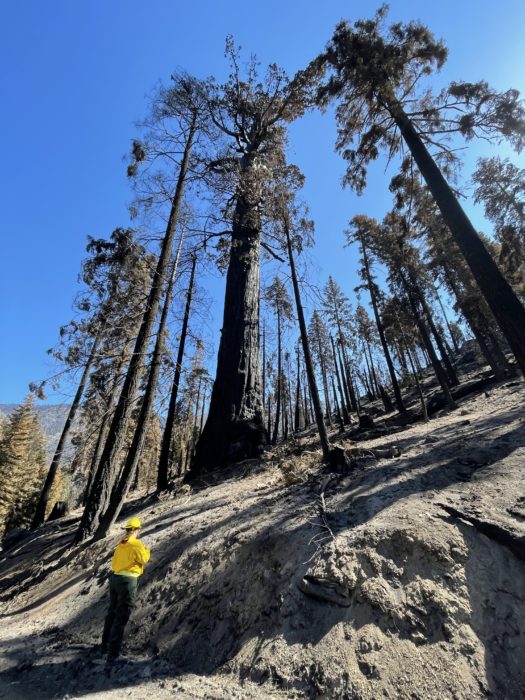
A complete giant sequoia mortality study will be conducted by the League and its partners in spring 2022. The League had prepared a 60-acre unit for a prescribed burn this fall in the hope of reducing the risk of catastrophic wildfire loss. The League held approved permits, and contracted with a burn boss; however, the Windy Fire got there first.
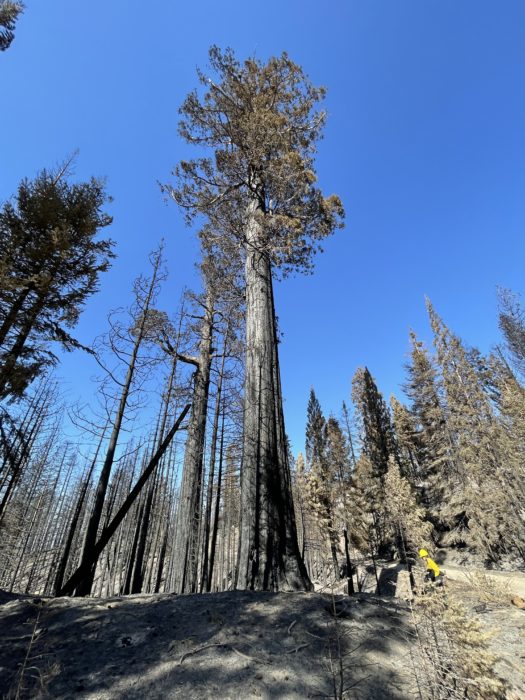
Since Sept. 9, the lightning-caused Windy Fire has burned 97,554 acres and is 92% contained as of Oct. 25. The League’s Red Hill property, on the South Fork of the Tule River in the southern Sierra, contains 110 ancient giant sequoia and provides a critical habitat for a variety of imperiled species including the Pacific fisher, Sierra marten and California spotted owl. Red Hill is located less than 200 miles from Los Angeles.
Preliminary studies from the National Park Service estimate that between 7,500 and 10,400 mature giant sequoia were killed in the 2020 Castle Fire/SQF Complex in the Sierra Nevada. This constitutes between 10% and 14% of the oldest and largest trees. This is stunning news, considering that giant sequoia have evolved to be highly resistant to fire. In recent years, the loss of just a few dozen giant sequoia was considered highly unusual.
While many factors, including climate change, contributed to the devastation, it is the unnatural buildup of vegetation due to decades of fire suppression in the Sierra Nevada that is the most immediate issue.
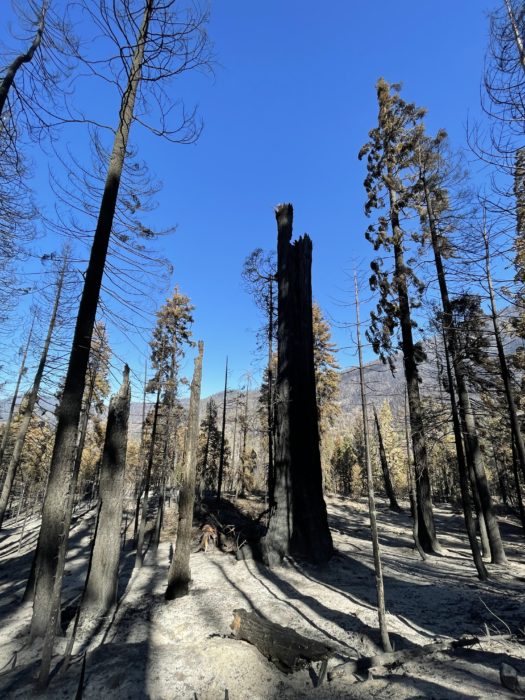
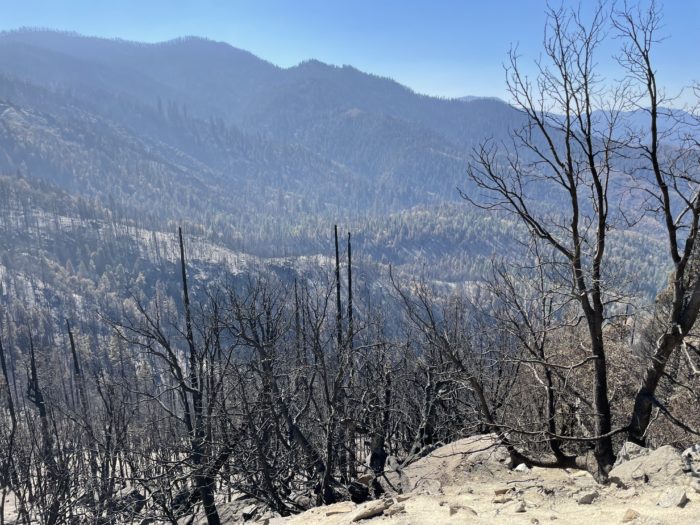


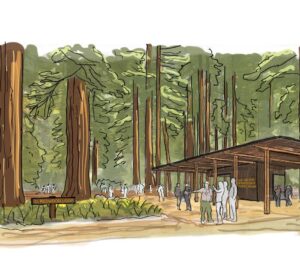

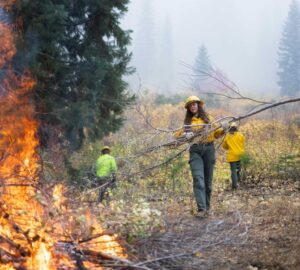
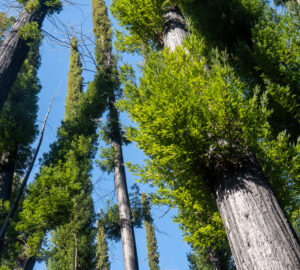
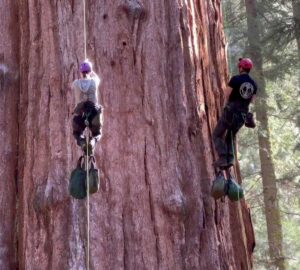
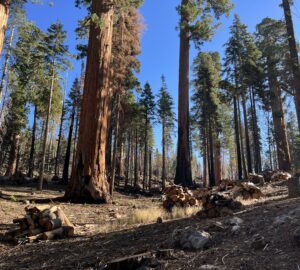
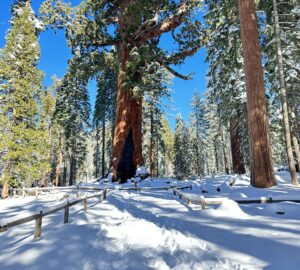
4 Responses to “First look at League’s Red Hill property confirms giant sequoia loss”
Theresa Foster
The devastation is heartbreaking.
Clifford and Pearl Pearl Bove
How disheartening! Permits secured for a controlled burn and to have the opportunity to finally rectify past poor forestry practices vanish. Fire suppression of years passed have made the situation worst. Before the arrival of such practices, fires would merely burn high grasses and promote fire dependent plant reproduction. Hopefully it does not rain and wash away the slopes.
Good luck and hopefully regeneration will take hold fast!
Franklin Graham
When will our politicians get real? Provide funds for a forest brigade to clear the under-story, Do not just wait for disaster to happen. I would prefer to see redwoods protected than to see infrastructure money go for even more roads being built to satisfy developers and real estate interests. First do no harm, then think about the damn roads!
David Custodio
The video of two people talking and pitching for money WAS NOT my idea of “surveying Windy Fire damage” that the video title led me to expect. Voiceover of photos or video “surveying”, that is “seeing”, EXAMPLES of spared trees, clumps of surviving greenery, sequoia sprouts, (probably too early for this one, but photos or video of the sprouts from the previous (several years ago) fire would be helpful. The video of two people talking wasn’t much of a “survey”…